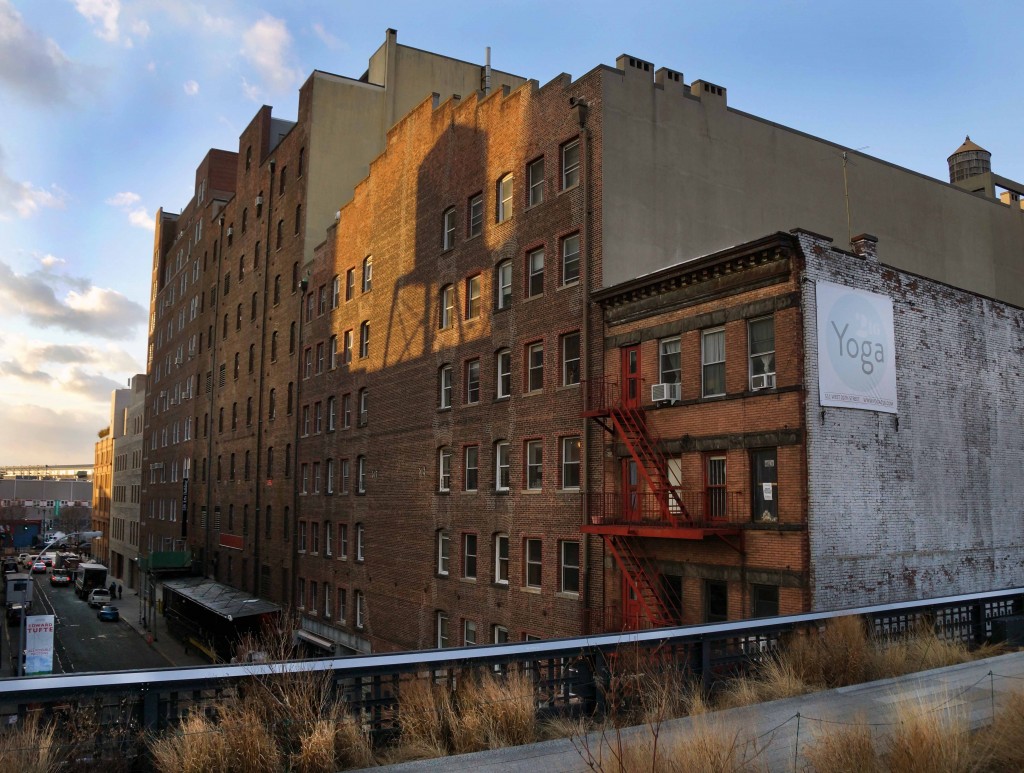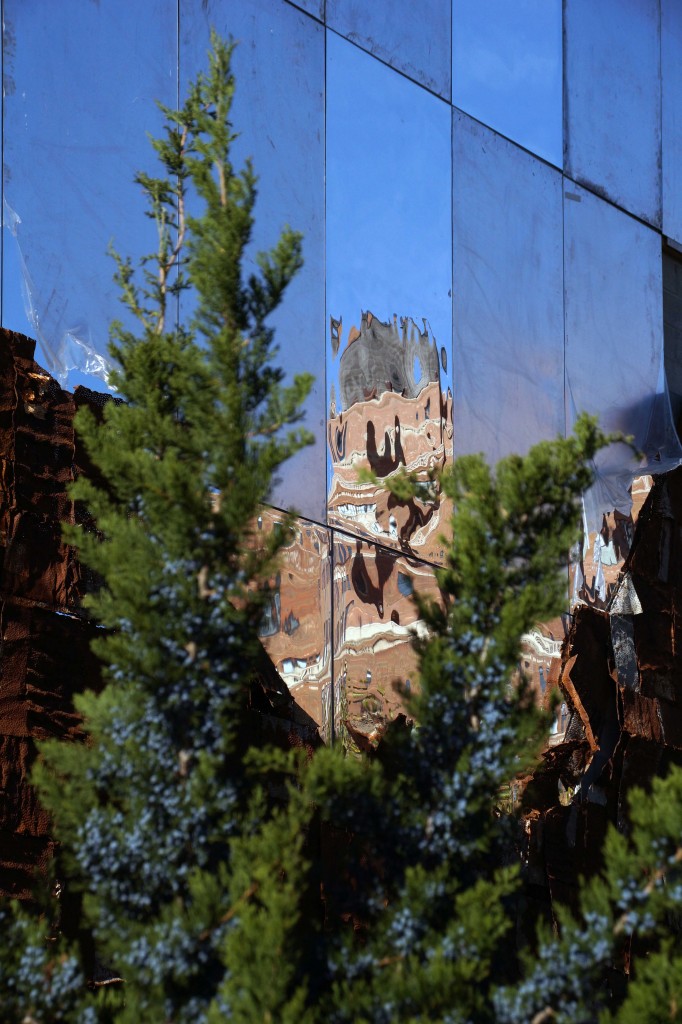Who doesn’t love a New York City water tank? This iconic rooftop emblem is famous around the world, a standard bearer for our skyline. Recently — and from the High Line, my favorite observation deck — I’ve discovered a new way to appreciate these “silent sentries,” as the filmmaker Jane Martin calls them: in reflection.
Yesterday I took a stroll during the last half hour the park was open, and heading for the 20th Street stairs noticed this fine shadow on the old Baker & Williams warehouse. Spindly but clear, it’s a water tower that got caught in the setting sun, like a giant arachnid, and for a few minutes its skeletal outline was broadcast upon this old brick warehouse. This is a complex of buildings I’ve been photographing for years; it’s not particularly beautiful (although the water tower makes it so) but it has an unusual backstory that can be traced to the founding of New Amsterdam in the 17th century.
The first Dutch settlers on this island were entrepreneurs; they came here to do business. Their founding venture was to enable trade — primarily in beaver pelts — for the Dutch West India Company. Reports of the city’s earliest days include mention of warehouses “for storing furs and transferring them to ships.” The book Dutch New York describes the active commercial waterfront of 1664 as “rows of closely built brick, stepped, or spout-gabled townhouses and warehouses.”
Since the Industrial Revolution warehouses have been an essential part of West Chelsea, fueled by two key factors: the explosion of foreign and domestic trade on the Hudson River waterfront and passage of the Warehousing Act of 1846, which allowed private companies to warehouse goods and defer the payment of fees or taxes until products had been reshipped or picked up by the consignee. Defending that law twenty-five years later, the Storekeeper of the Port of New York noted that England’s similar arrangement “made her the mistress of the commerce of the world,” a position New Yorkers have vied for since the days of Henry Hudson.
The three brick buildings on 20th Street just west of the High Line once belonged to the Baker & Williams Company, which operated “bonded,” or duty-free, warehouses around the city as a direct benefit of the 1846 law. It’s also the site that helps explain how the Manhattan Project got its name. In the 1940s this set of buildings was used as a top-secret government facility for storing tons of processed uranium, which was being studied as part of the research effort that led to the production of the atom bomb. This was one of at least ten locations in Manhattan that participated in the atomic energy project; today it houses galleries and related businesses, and sits directly across the street from a house of worship, the Kingdom Hall of Jehovah’s Witnesses, and next door to the headquarters of Friends of the High Line. (For more, read William Broad’s fascinating article in the New York Times, “Why They Called it the Manhattan Project”)
The water tower that’s projected onto the warehouse also hails from a distant lineage and embodies a craft much more ancient than our metropolis. The great CBS newsman Charles Kuralt looked up at these structures and saw “the hoops and staves of the Middle Ages.” Everywhere in New York, it seems, are the shadows of history.
Below is another water tank in reflection, but this time from a thoroughly modern installation: the El Anatsui sculpture “Broken Bridge II,” that’s mounted on a building facade at 22nd Street. The tank it reveals is one of my favorites in the city; look a bit north and to the east and you’ll see it on the roof of the London Terrace Apartments on 23rd Street. That building also has a great backstory, but I’ll leave it for another day. (Or, you can read about it in my book, available for sale on the official website of Friends of the High Line!)










